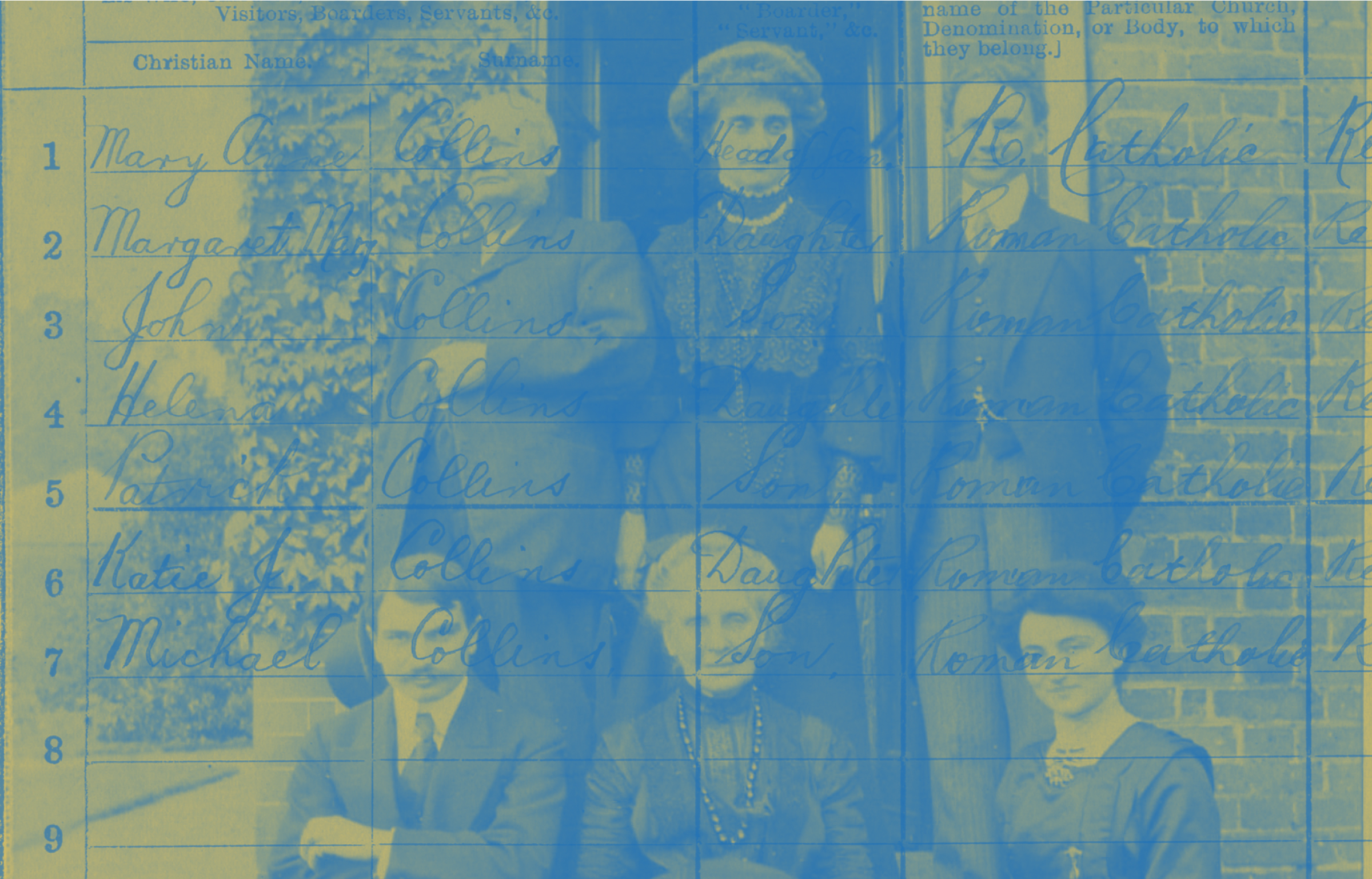The 1911 Census was the last census to cover the entire island of Ireland before the partition in 1921.
The 1911 census of Ireland, conducted on April 2, 1911, follows a similar format to the 1901 census but includes additional information. Along with the details recorded in the 1901 census, the 1911 census required married women to state:
– The number of years they had been married
– The number of children they had born alive
– The number of children they had still living
This added layer of information provides deeper insights into family structures and fertility rates at the time.
Like the 1901 census, the 1911 census includes returns for various institutions and detailed information about houses.
The enumerator provided summaries of the returns for each townland and street, including:
– The religious denomination of occupants
– A list of heads of household, serving as a nominal index for each area
The 1911 census of Ireland offers a fascinating glimpse into life over a century ago, capturing a detailed snapshot of the country’s social, economic, and cultural landscape. By delving into this historical document, you can uncover a wealth of information about the people and communities of early 20th-century Ireland.
What’s in the 1911 census?
Common occupations
The census reveals the diverse range of occupations that people were engaged in. From farming and fishing in rural areas to industrial work and domestic service in urban centres, the data highlights the economic activities that shaped daily life.
For instance, Belfast was renowned for its shipbuilding and linen production, while Cork was famous for its butter trade and distilleries.
Regional differences
The census information also showcases the regional variations in occupations and industries. Coastal areas like Galway had thriving fishing communities, while cities like Dublin and Belfast were hubs of industrial activity.
These regional differences paint a vivid picture of the varied economic landscape across Ireland.
Impact on society
The industries of the time had profound impacts on society. They spurred economic growth, led to urbanisation, and influenced cultural practices.
The rise of industrial employment also saw the emergence of labour movements, as workers organised to demand better conditions and rights.
Household composition and living conditions
The census provides detailed information about household composition, including the number of people living in each household, their ages, occupations, and relationships to the head of the household.
It also sheds light on housing conditions, such as the type of dwelling and the number of rooms, offering insights into the living standards of the era.
Literacy and language
Literacy rates and language use are also documented, revealing the educational landscape and cultural diversity of the time. The census data shows improving literacy rates, with notable differences between urban and rural areas, and highlights the prevalence of the Irish language in certain regions.
Religion
The census includes questions about religion, providing valuable information about the religious composition of the population. This data helps us understand the social and cultural fabric of early 20th-century Ireland.
By exploring the 1911 census of Ireland, you can uncover these and many other intriguing details about the lives of your ancestors and the history of Ireland.
Whether you’re interested in family history, social history, or economic history, the census is a treasure trove of information waiting to be discovered.
